Transporting a bike in a truck requires careful planning, proper equipment, and attention to detail to ensure safety and protection during the journey․
Understanding Bike Transport Logistics
Before engaging in bike transport, it’s essential to grasp the logistics involved․ Proper planning ensures the safe and efficient movement of your bicycle․ Start by assessing the truck’s capacity to accommodate your bike, considering its frame size and any additional accessories․ Determine if disassembly is necessary for a snug fit․ Additionally, inspect the truck bed for cleanliness and suitability, ensuring it’s free of debris that could damage your bike․ Consider the distance and road conditions to plan for any required padding and protection․ Evaluate tie-down strap options for securing your bike effectively; Understanding these logistics will streamline the entire process, enhancing both bicycle safety and transport efficiency․
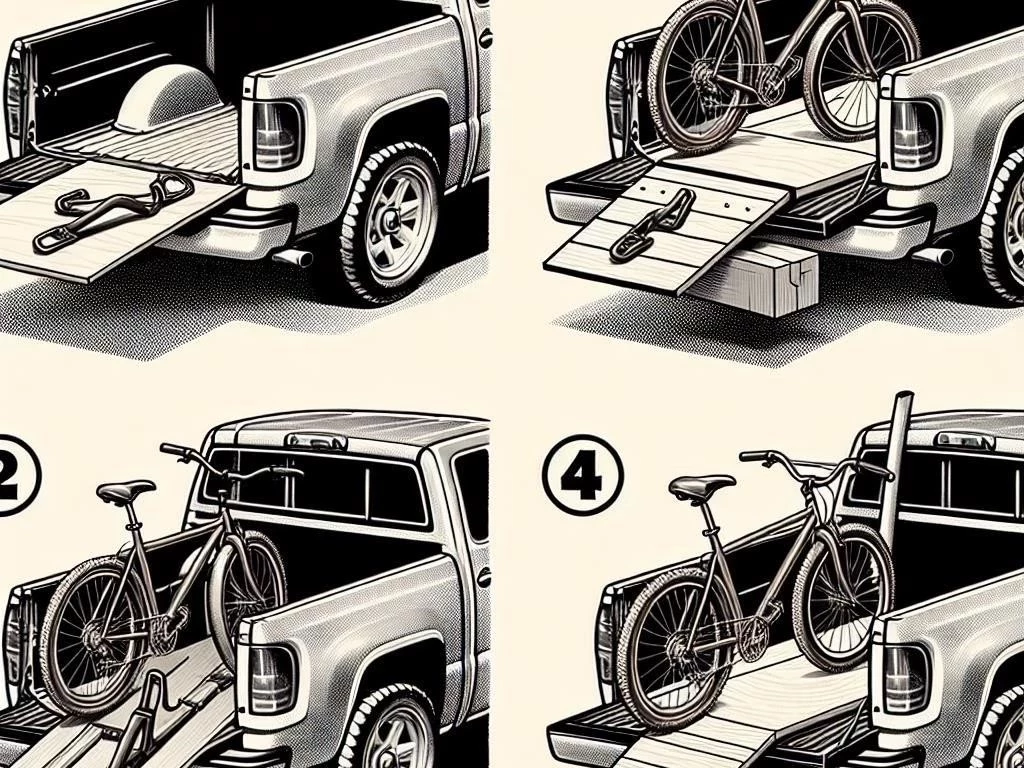
Preparing Your Bike for Transport
Preparing your bike for transport is crucial to ensure it arrives safely at its destination․ Begin by cleaning your bicycle thoroughly to prevent dirt and grime from damaging the bike frame during transport․ Next, inspect all components, such as brakes and gears, to ensure proper functionality․ Inflate the tires adequately, as they provide essential support during movement․ If applicable, remove any loose accessories that could get damaged or lost while loading․ Additionally, consider using protective gear like bubble wrap or foam to cover sensitive areas of the bike, like the frame and handlebars․ Proper preparation can significantly enhance the overall bike handling experience during transportation․
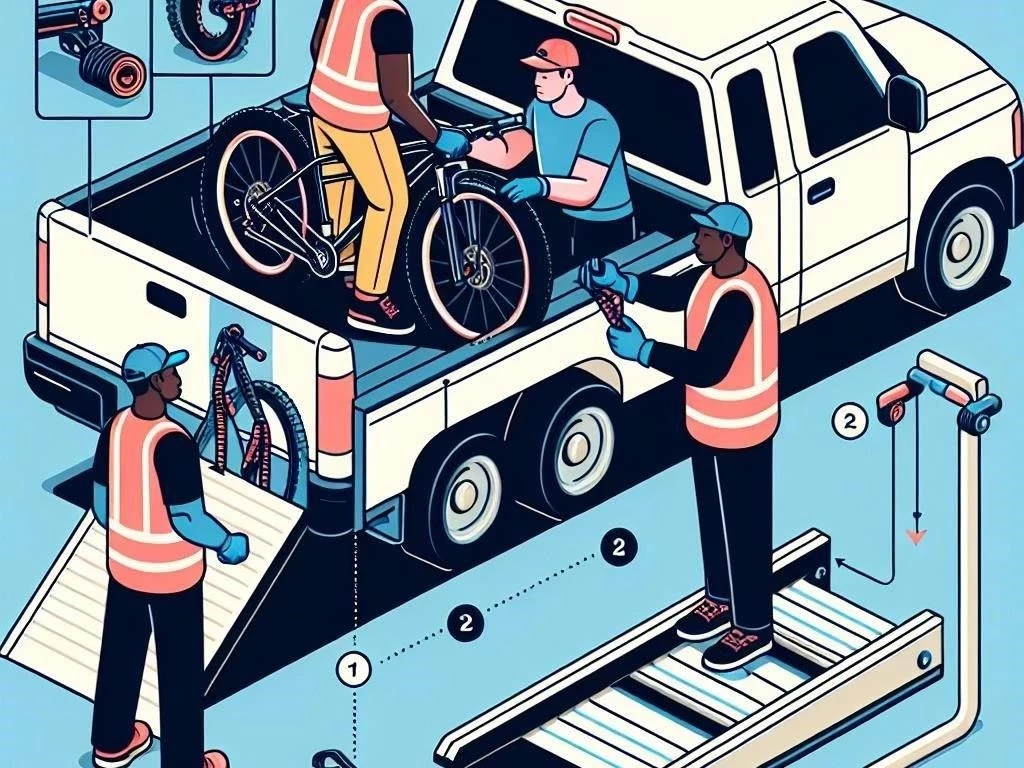
Bike Disassembly: Step-by-Step Guide
Disassembling your bike properly is essential for efficient transport․ Start by gathering necessary tools, such as an Allen wrench and a pedal wrench․ First, remove the front wheel by loosening the quick-release lever or axle nut, ensuring careful handling of the brake components․ Next, detach the pedals by turning them counterclockwise, which may require some force․ After that, lower the seat to minimize space usage in the truck․ If necessary, remove the rear wheel, following the same procedure as the front․ Make sure to keep all small parts together, like quick-release skewers and bolts, in a secure bag, ensuring you have everything for reassembly later․
3․1 Removing the Front Wheel
To remove the front wheel, begin by ensuring your bike is stable, either by leaning it against a wall or using a bike stand․ Locate the quick-release lever or axle nut that secures the wheel․ If using a quick-release system, simply open the lever and turn it counterclockwise until it loosens․ For axle nuts, use the appropriate wrench to unscrew them carefully․ Once loose, gently pull the wheel away from the fork․ Be mindful of the brake components; if necessary, release the brake caliper for easier removal․ After detaching the wheel, store it securely with padding to protect it during transport, preventing any potential damage to the bike frame․
3․2 Detaching the Pedals
Detaching the pedals is an important step for efficient bike transport․ Start by using a pedal wrench or an adjustable wrench, ensuring you have adequate leverage․ Identify the left and right pedals; remember that the left pedal has a reverse thread, meaning it unscrews clockwise, unlike the right pedal, which unscrews counterclockwise․ Position the wrench securely on the pedal axle and apply pressure to loosen it․ Once loosened, continue to turn the pedal until it detaches completely․ Keep both pedals together in a secure bag, along with any small parts, ensuring you have everything needed for reassembly․ This process minimizes space and prevents damage during transport․
3․3 Lowering the Seat
Lowering the seat is a key step in preparing your bike for transport, helping to save space in the truck․ First, locate the seat post clamp, which is typically situated just above the seat․ Use an Allen wrench or a quick-release lever, depending on your bike’s setup․ If using an Allen wrench, loosen the clamp by turning it counterclockwise until you can slide the seat post down․ If it’s a quick-release, simply open the lever and pull down the seat․ Ensure you lower the seat to a position that keeps it securely within the confines of the truck bed, preventing any potential damage during transport while facilitating easier loading․
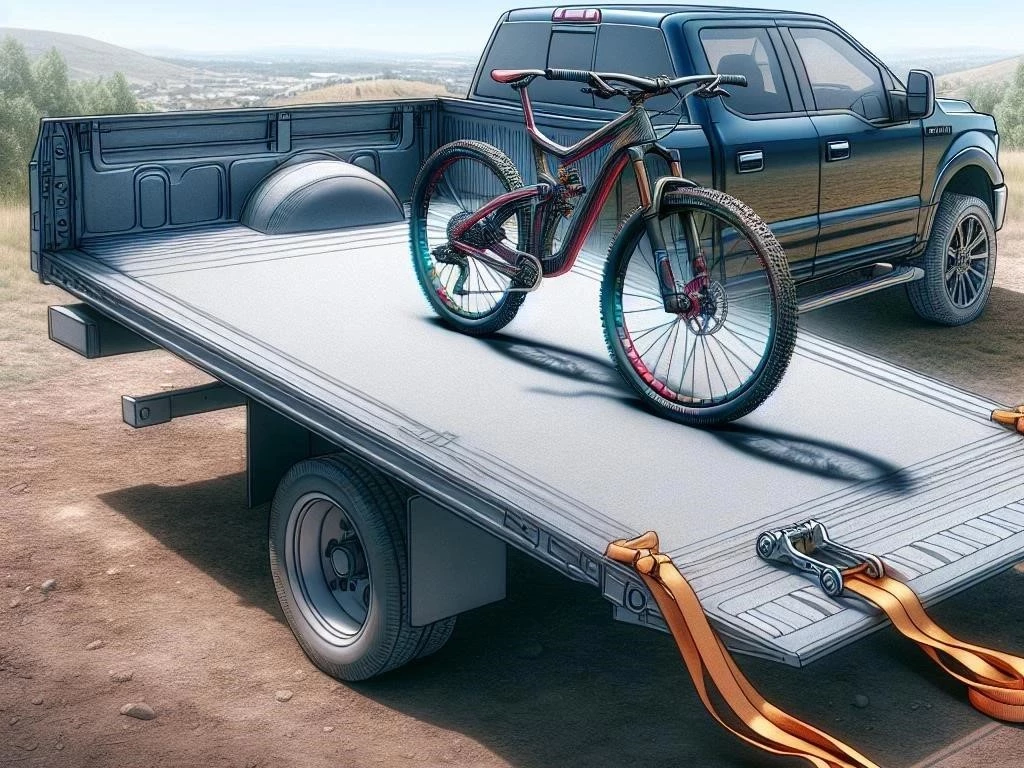
Choosing the Right Truck for Bike Transportation
Selecting the appropriate truck for bike transportation is vital for ensuring a safe journey․ Begin by assessing the size of your bike and the truck’s cargo space; a truck bed should be spacious enough to accommodate your bicycle comfortably․ Consider trucks with low beds for easier loading and unloading․ Additionally, evaluate the truck’s interior; a truck with a covered bed can provide extra protection against weather elements․ Look for trucks with tie-down points or cargo management systems that facilitate secure bike transport․ It’s also essential to consider the distance and terrain of your journey to choose a truck that can handle both effectively, ensuring a smooth trip․
Loading the Bike onto the Truck Bed
Loading your bike onto the truck bed requires careful attention to ensure its safety during transport․ Start by positioning the bike near the truck bed, ensuring it’s stable and secure․ If possible, use a ramp to facilitate a smooth transition, reducing the risk of damage․ Lift the bike by the frame, avoiding any sensitive components like the handlebars․ Once positioned on the truck bed, ensure it is centered to maintain balance․ If disassembled, place the bike parts in a way that maximizes space․ Check for any protruding items in the truck that might damage the bike․ Proper loading techniques are crucial for a safe and successful transport experience․
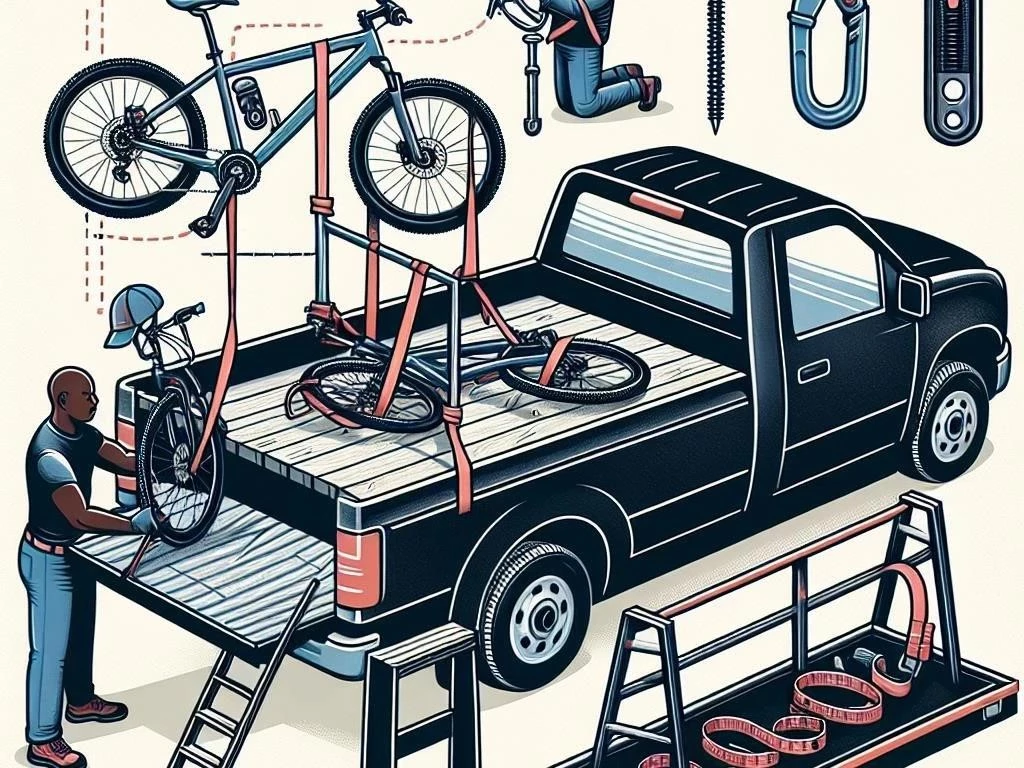
5․1 Safe Vehicle Loading Techniques
Employing safe vehicle loading techniques is essential for protecting your bike during transport․ Start by ensuring the truck is parked on a flat, stable surface to prevent any movement during the loading process․ If available, utilize a loading ramp to minimize the risk of dropping or damaging the bike․ When lifting the bicycle, always grasp the frame and avoid holding any delicate components․ Position the bike securely in the truck bed, ensuring it is stable and well-balanced․ Use padding, such as blankets or foam, around the bike to prevent scratches or dents․ Finally, maintain clear communication with any helpers to coordinate the loading process safely and effectively․
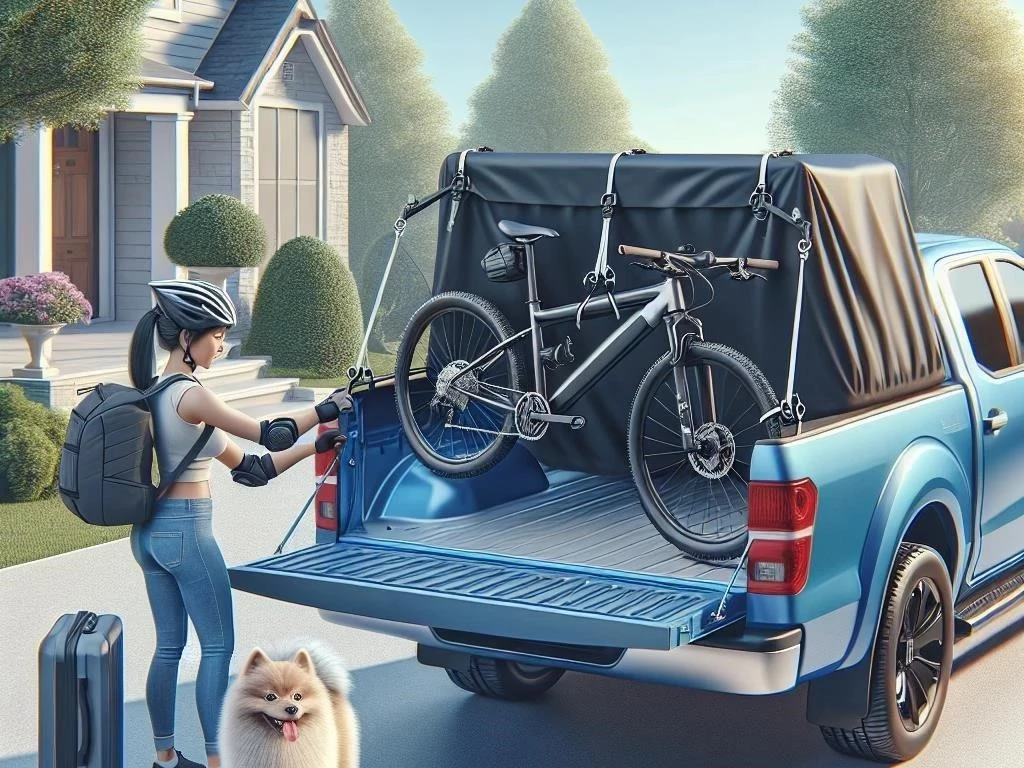
5․2 Using Padding and Protection
Using adequate padding and protection is crucial when transporting a bike in a truck to prevent damage․ Start by wrapping sensitive areas such as the bike frame, handlebars, and wheels with protective materials like foam, bubble wrap, or blankets․ This cushioning helps absorb shocks during transit, safeguarding against scratches and dents․ If disassembling the bike, ensure individual components like the front wheel and pedals are also padded․ Securely position these items in the truck bed with the padding intact․ Additionally, consider using straps or ropes to keep the padding in place․ Proper use of padding and protection enhances bicycle safety and ensures a smooth transport experience without unwanted damage․
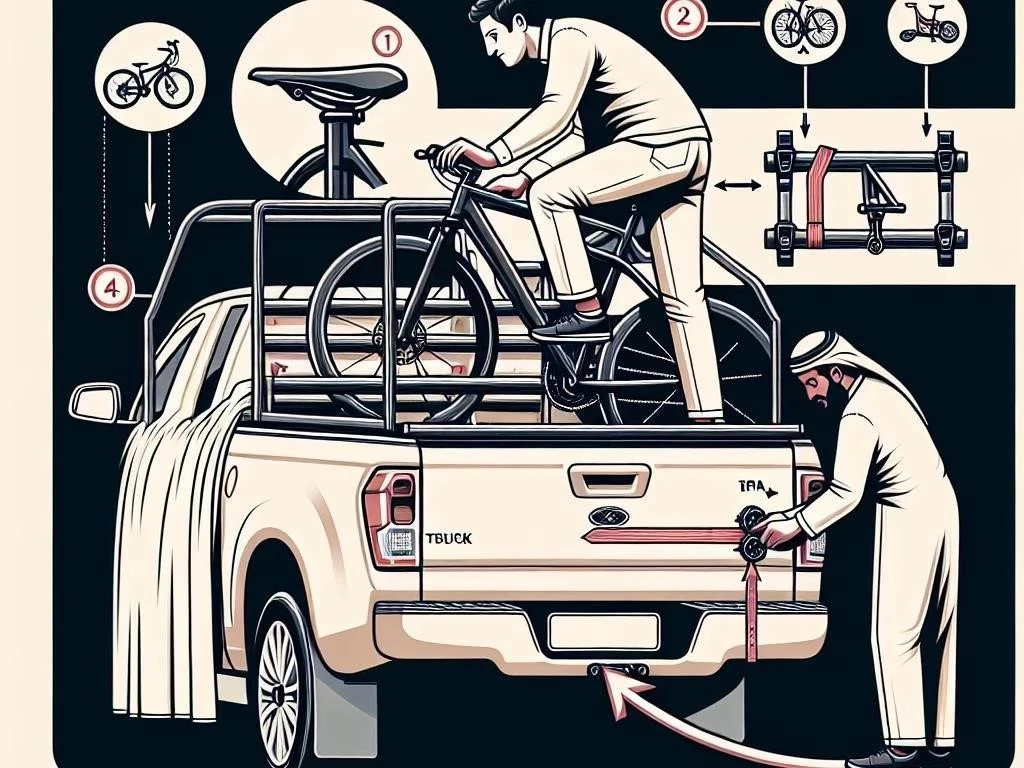
Securing a Bike During Transport
Securing your bike during transport is essential to prevent movement and potential damage․ Begin by utilizing high-quality tie-down straps, which provide a reliable method for securing your bicycle․ Attach one end of the strap to the truck bed and the other to the bike frame, ensuring it is tight but not overly constrictive․ Consider using multiple straps for added security, particularly if the bike is disassembled․ Position the bike upright, ensuring it does not lean against any other cargo․ Regularly check the straps during transit, especially on long journeys․ Properly securing your bike reduces the risk of shifting or falling, enhancing overall safety while traveling․
6․1 Tie-Down Straps: Proper Usage
Using tie-down straps correctly is crucial for securing your bike during transport․ Begin by choosing high-quality, durable straps designed for cargo management․ Attach one end of the strap to a solid anchor point in the truck bed, ensuring it’s stable․ Next, loop the other end around the bike frame, ideally around the lower section to avoid damaging sensitive components․ Pull the strap tight, ensuring there is no slack that could allow movement․ Utilize ratchet straps for added tension, but avoid overtightening, which can cause damage․ For larger bikes or those with multiple components, consider using additional straps to enhance stability and prevent shifting during transit․
6․2 Cargo Management Tips
Effective cargo management is essential for transporting a bike securely in a truck․ Begin by organizing all necessary components before loading, including tie-down straps, padding, and any additional bike accessories․ Arrange items in the truck bed strategically to maximize space and ensure stability․ Place heavier items at the bottom and lighter items on top to maintain balance․ Consider using cargo nets or dividers to separate the bike from other gear, preventing scratches and damage․ Regularly check the load’s stability during breaks, as shifting can occur․ Additionally, label containers for easy access to bike accessories, ensuring a smooth loading and unloading process at your destination․
Bike Storage in the Truck
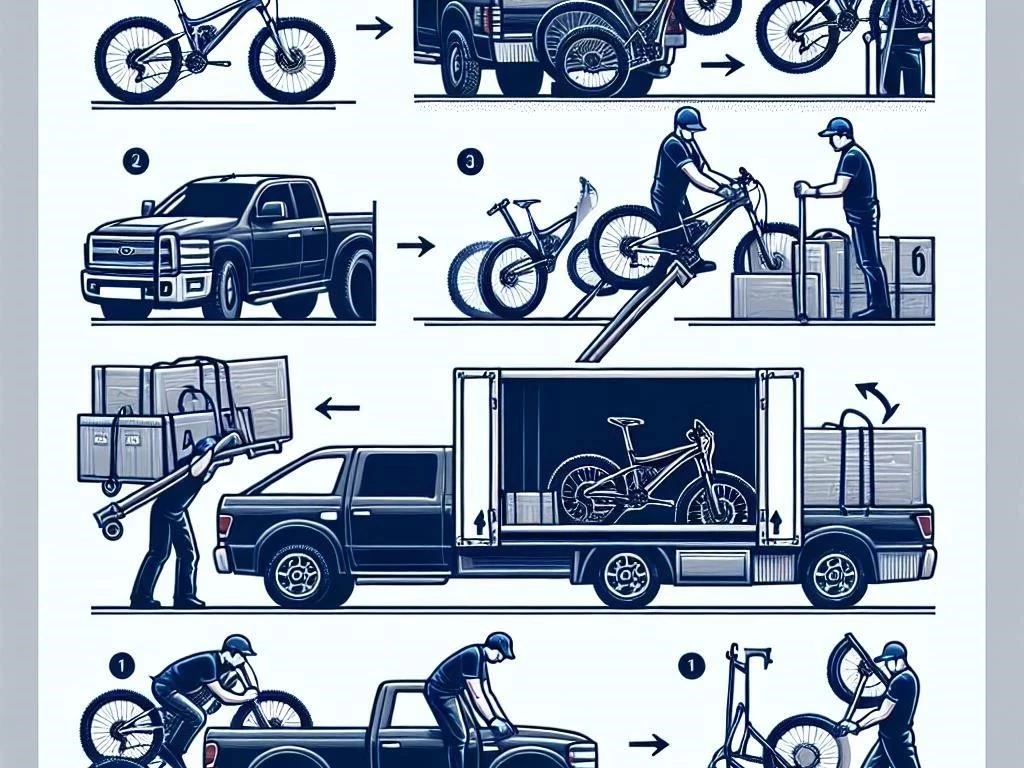
Proper bike storage in the truck is crucial for preventing damage during transport․ Begin by ensuring the bike is securely positioned in the truck bed, utilizing padding and protection to shield sensitive areas․ If the bike is disassembled, store each component in a designated area, keeping them organized to facilitate reassembly later․ Use containers or bags for small parts like pedals and quick-release skewers․ Ensure the bike is upright and stable to avoid any shifting during the journey․ Consider using cargo straps to keep the bike securely in place, checking that it does not touch any hard surfaces; This careful storage approach enhances overall bike safety․
7․1 Organizing Bike Accessories
Organizing bike accessories effectively enhances the transport experience and simplifies reassembly․ Start by gathering all necessary items, including tools, spare tubes, pumps, and protective gear․ Use small bags or containers to categorize accessories, labeling each for easy identification․ Consider using a backpack or dedicated toolbox to keep everything together, ensuring it’s easy to access when needed․ Securely store these bags in the truck, ideally in a spot that prevents movement during transit․ Additionally, keep frequently used items, like tire levers or multi-tools, readily accessible on top of the other gear․ This systematic organization reduces the risk of losing essential items and streamlines the entire bike transport process․
7․2 Ensuring Bicycle Safety While Hauling
Ensuring bicycle safety while hauling is paramount to preventing damage during transport․ Begin by securely securing the bike with high-quality tie-down straps, ensuring it remains stable throughout the journey․ Utilize padding around sensitive areas, like the frame and wheels, to absorb shocks from bumps and vibrations․ Regularly check the bike’s position during stops to confirm it hasn’t shifted․ Avoid overloading the truck bed with other items, as this can increase the risk of accidents or damage․ If possible, cover the bike with a tarp or blanket to protect it from dust and debris․ These precautions significantly enhance bicycle safety, ensuring a smooth and worry-free transport experience․
Protective Gear for the Transport Process
Using protective gear during the transport process is essential for safeguarding your bike from potential damage․ Start by investing in quality padding materials, such as foam or bubble wrap, to shield vulnerable areas like the frame and wheels․ Additionally, consider using protective covers specifically designed for bicycles, which can guard against dirt, debris, and minor impacts․ Ensure that all components, including handlebars and pedals, are adequately protected with soft materials․ For transporting accessories, use padded bags to keep them secure and organized․ Lastly, wear gloves when handling the bike to prevent any accidental scratches․ This protective gear enhances overall safety and ensures your bike remains in excellent condition during transport․
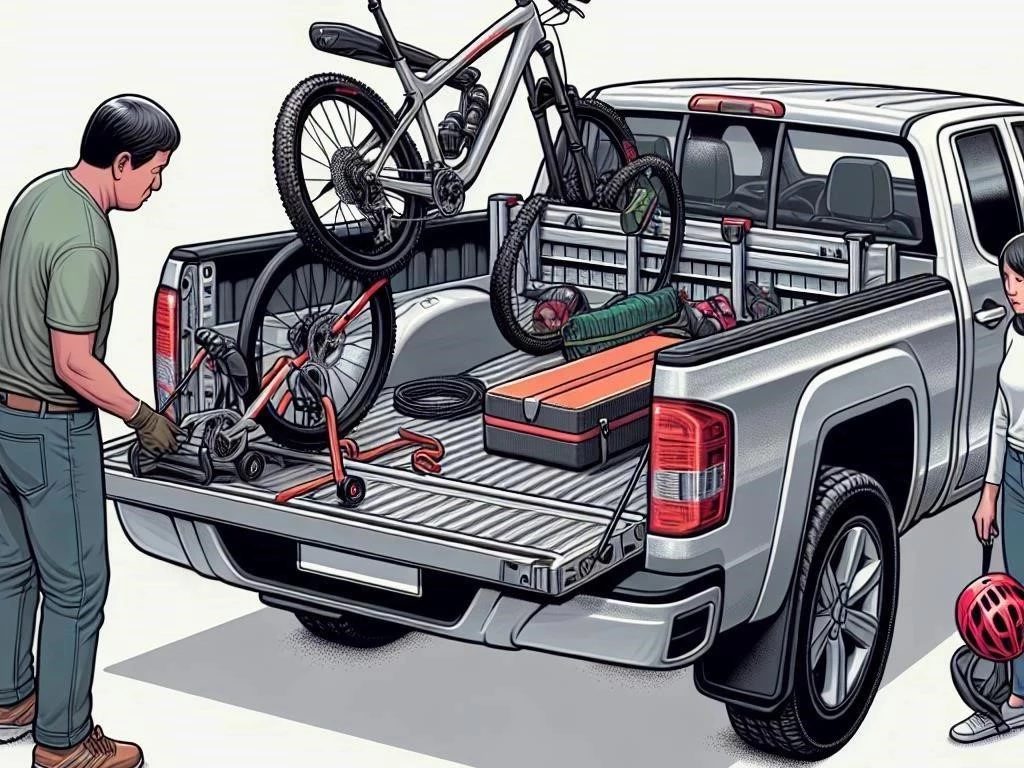
Moving Bicycles: Best Practices
Moving bicycles requires adherence to best practices for ensuring a smooth transport experience․ Begin by disassembling the bike to reduce its size, removing the front wheel, pedals, and lowering the seat․ Secure all components and accessories in organized bags to prevent loss․ When loading the bike into the truck, use a ramp to facilitate easy movement and avoid damage․ Ensure the bike is positioned upright and stable, utilizing padding and protection to safeguard the frame and wheels․ Employ high-quality tie-down straps to secure the bike, preventing any shifting during transit․ Regularly check the load during breaks to maintain stability and ensure a safe journey to your destination․
Final Checks Before Starting Your Journey
Conducting final checks before starting your journey is essential for ensuring a smooth transport experience․ Begin by verifying that the bike is securely loaded in the truck bed, ensuring it is upright and stable․ Check that all tie-down straps are tight and properly positioned to prevent movement during transit․ Inspect the bike for any loose components that may have come undone during loading․ Additionally, confirm that all accessories and tools are organized and easily accessible․ Lastly, ensure the truck is in good working condition, checking tire pressure and fuel levels․ Completing these final checks provides peace of mind and enhances overall safety throughout your journey․